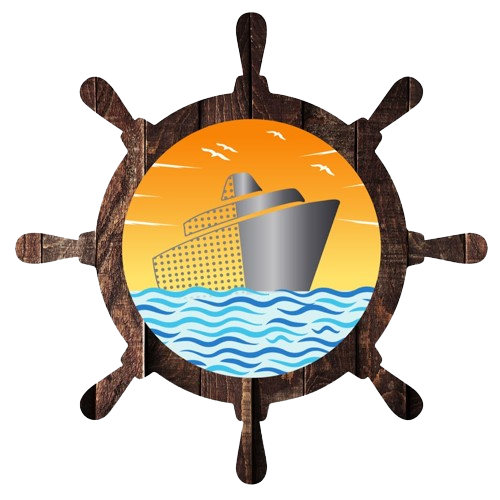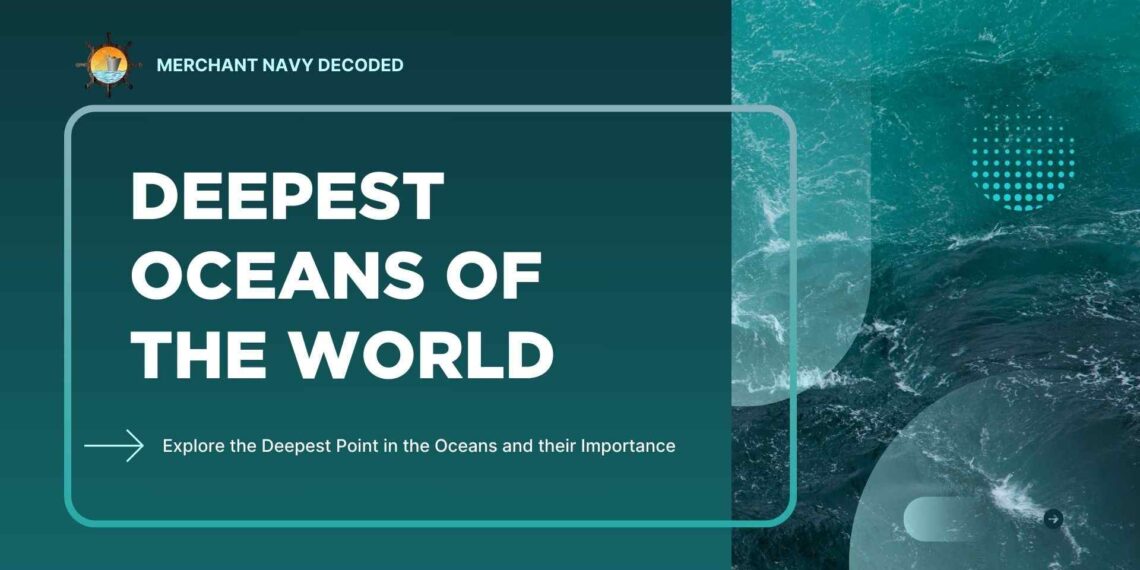Deepest Oceans in the World
Have you ever looked at the ocean and thought, “How deep down does it extend?” The sea is like a big puzzle blanketing most of our world. Some areas are shallow where we can play and enjoy, but other places are so deep that light can’t even reach them! Let’s jump in and check out the world’s deepest seas.
1. The Pacific Ocean – The Deepest Ocean
The Pacific Ocean stands as the largest and deepest ocean on Earth. It spans from Asia to America covering a vast portion of the globe. The deepest point in the Pacific Ocean is called the Mariana Trench, about 11,000 meters (36,000 feet) deep! Picture stacking 36 Eiffel Towers on top of each other—this trench goes even deeper than that!
1.1: The Mysterious Challenger Deep of Pacific Ocean
In the Mariana Trench, you’ll find a special location known as Challenger Deep. This spot holds the record for the deepest known part of the ocean. Not many people have made the journey there due to its pitch-black environment icy temperatures, and immense pressure. The area is home to some unusual sea life, including fish that light up and sea cucumbers, all existing in total darkness.
An interesting fact is that over 50% of the world’s shipping routes pass through the Pacific.
2. The Atlantic Ocean – Home to the Puerto Rico Trench
The Atlantic Ocean is the second-largest ocean and extends between the Americas, Europe, and Africa. The Puerto Rico Trench, the deepest section of this ocean, plunges to about 8,376 meters (27,500 feet). This depth matches the height of Mount Everest!
In this deep dark environment, unique fish and sea creatures stay alive by producing their light (bioluminescence). The Puerto Rico Trench also serves as an earthquake hotspot where the Earth’s plates shift and rattle the ocean floor.
- Interesting fact
- The Titanic sank in the Atlantic Ocean in 1912 after hitting an iceberg.
- The Bermuda Triangle, a mysterious region where ships and planes are said to disappear, is in this ocean.
- It is one of the busiest oceans for cargo ships, connecting Europe, Africa, and the Americas.
3. The Indian Ocean – The Java Trench’s Secret Depths
The Indian Ocean holds the title of the warmest ocean worldwide. It sits between Africa, Asia, and Australia. The Java Trench, its deepest point, reaches about 7,450 meters (24,442 feet) down.
This trench goes beyond mere depth; it also serves as the birthplace of intense underwater earthquakes and tsunamis. Researchers dive into this region to gain insights into the origins of these natural calamities. The deep waters here provide a habitat for uncommon sea creatures, including colossal squids and ghost sharks.
- Interesting fact
- The Suez Canal connects the Indian Ocean to the Mediterranean, reducing travel time for ships between Asia and Europe.
- The Indian Ocean is rich in oil and gas reserves, which makes it important for the world economy.
4. The Southern Ocean – The Coldest and Deepest Waters
The Southern Ocean surrounds Antarctica, making it the coldest ocean on Earth. Its deepest point is called the South Sandwich Trench, which is about 7,434 meters (24,383 feet) deep.
Because of the extreme cold, very few animals can survive here. However, creatures like giant squid, deep-sea jellyfish, and special fish with antifreeze in their blood live in these freezing waters.
- Interesting Fact:
- It has the strongest winds and waves in the world, making it dangerous for ships.
- The Southern Ocean is the only ocean that circles the entire Earth without touching land.
- Icebreaker ships are used to navigate through the ice-covered waters in this ocean.
5. The Arctic Ocean – The Icy Deep
The Arctic Ocean is the smallest and coldest ocean. It is covered with ice for most of the year. The deepest part of the Arctic Ocean is called the Eurasian Basin, which is about 5,450 meters (17,881 feet) deep.
This ocean is home to polar bears, seals, and whales. Even though it is cold and dark at the bottom, tiny creatures like shrimp and crabs still live there.
- Interesting fact
- Due to global warming, new shipping routes are opening in the Arctic as ice melts.
6. Top 10 Deepest Points in the Ocean
- Challenger Deep (Mariana Trench, Pacific Ocean) – 10,994 meters (36,070 feet)
- Brownson Deep (Puerto Rico Trench, Atlantic Ocean) – 8,378 meters (27,480 feet)
- Java Trench (Indian Ocean) – 7,450 meters (24,442 feet)
- South Sandwich Trench (Southern Ocean) – 7,434 meters (24,383 feet)
- Eurasian Basin (Arctic Ocean) – 5,450 meters (17,881 feet)
- Tonga Trench (Pacific Ocean) – 10,882 meters (35,702 feet)
- Philippine Trench (Pacific Ocean) – 10,540 meters (34,580 feet)
- Kermadec Trench (Pacific Ocean) – 10,047 meters (32,963 feet)
- Izu-Ogasawara Trench (Pacific Ocean) – 9,780 meters (32,087 feet)
- Romanche Trench (Atlantic Ocean) – 7,760 meters (25,460 feet)
8. Why Are These Deep Places Important?
The deep oceans are important because they help scientists discover new sea animals and learn how earthquakes and tsunamis happen. They also help control the Earth’s climate by storing carbon dioxide and moving heat around. Deep-sea vents give clues about life on other planets, and many marine animals depend on the deep ocean for food. Scientists also study the ocean floor to learn about Earth’s past.
9. Conclusion
The oceans hold more mysteries than outer space! We’ve only scratched the surface of our exploration, and there’s an entire world waiting to be discovered. Who knows? Perhaps one day, you’ll be the one to dive in and reveal the secrets of the deep sea!
Disclaimer :- The opinions expressed in this article belong solely to the author and may not necessarily reflect those of Merchant Navy Decoded. We cannot guarantee the accuracy of the information provided and disclaim any responsibility for it. Data and visuals used are sourced from publicly available information and may not be authenticated by any regulatory body. Reviews and comments appearing on our blogs represent the opinions of individuals and do not necessarily reflect the views of Merchant Navy Decoded. We are not responsible for any loss or damage resulting from reliance on these reviews or comments.
Reproduction, copying, sharing, or use of the article or images in any form is strictly prohibited without prior permission from both the author and Merchant Navy Decoded.



